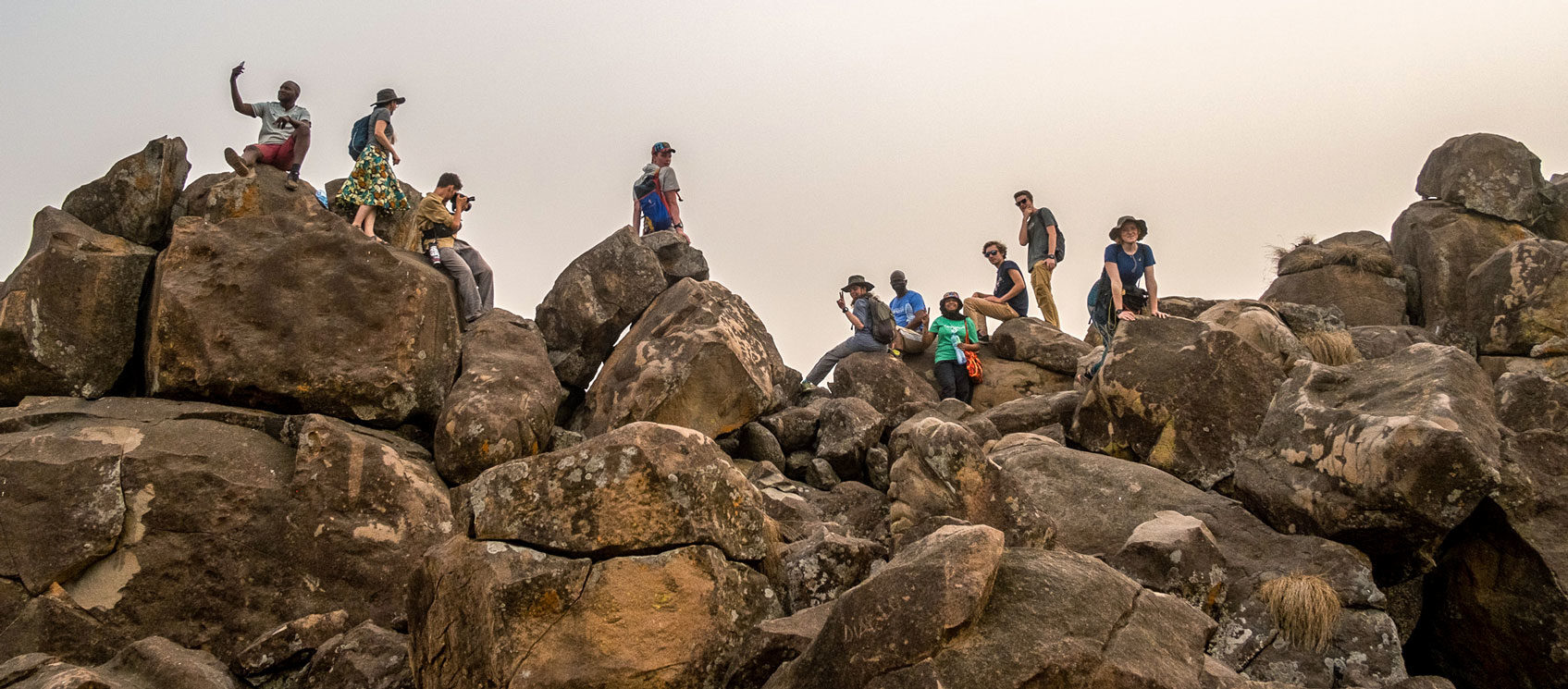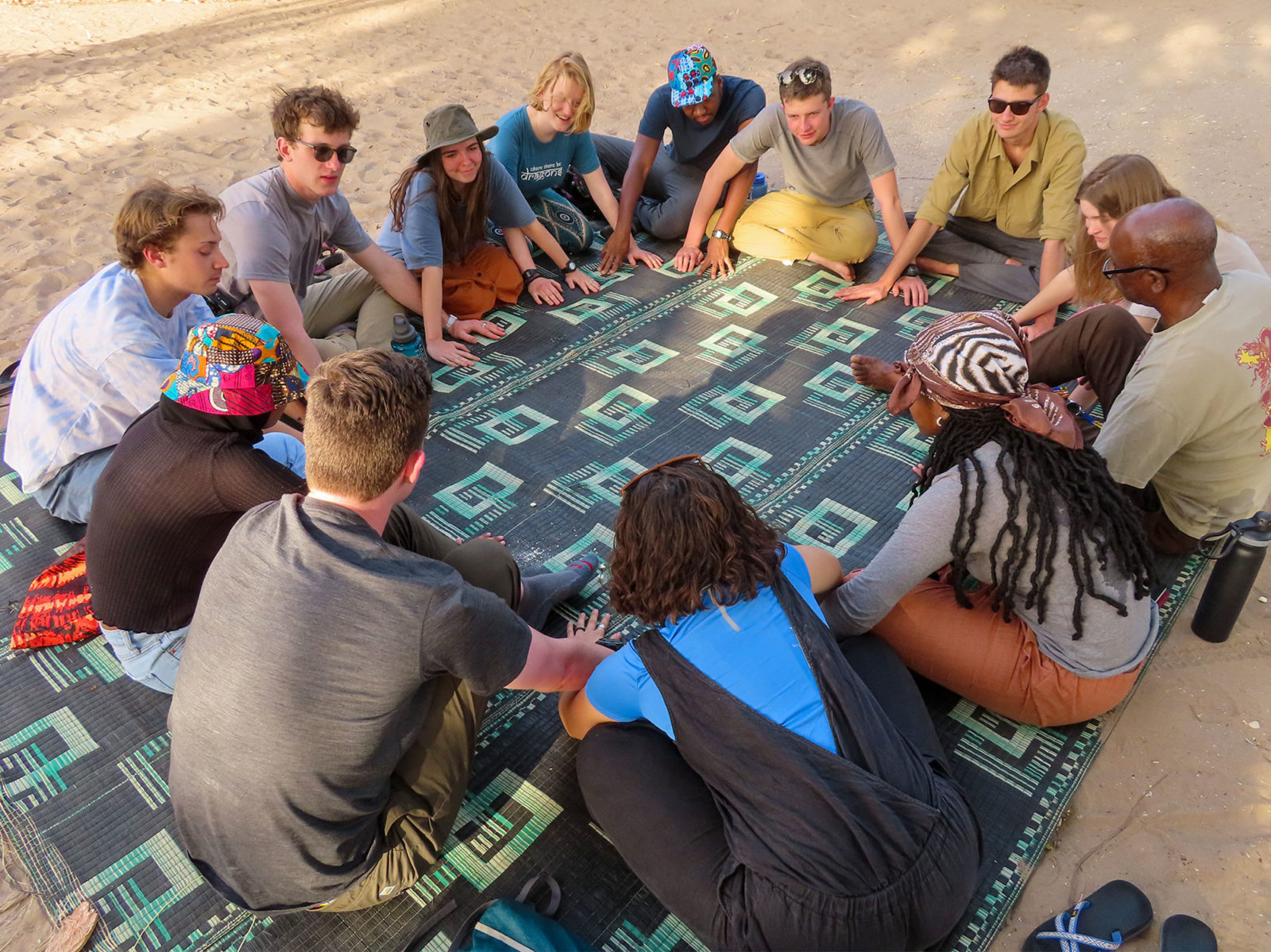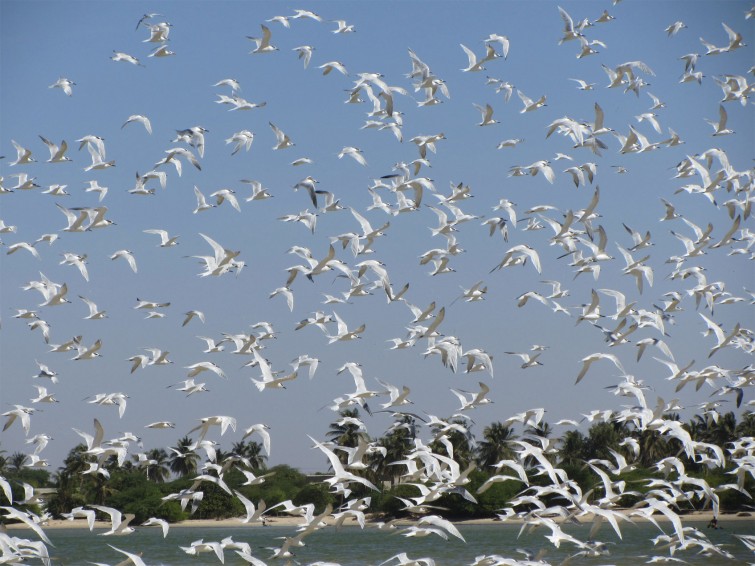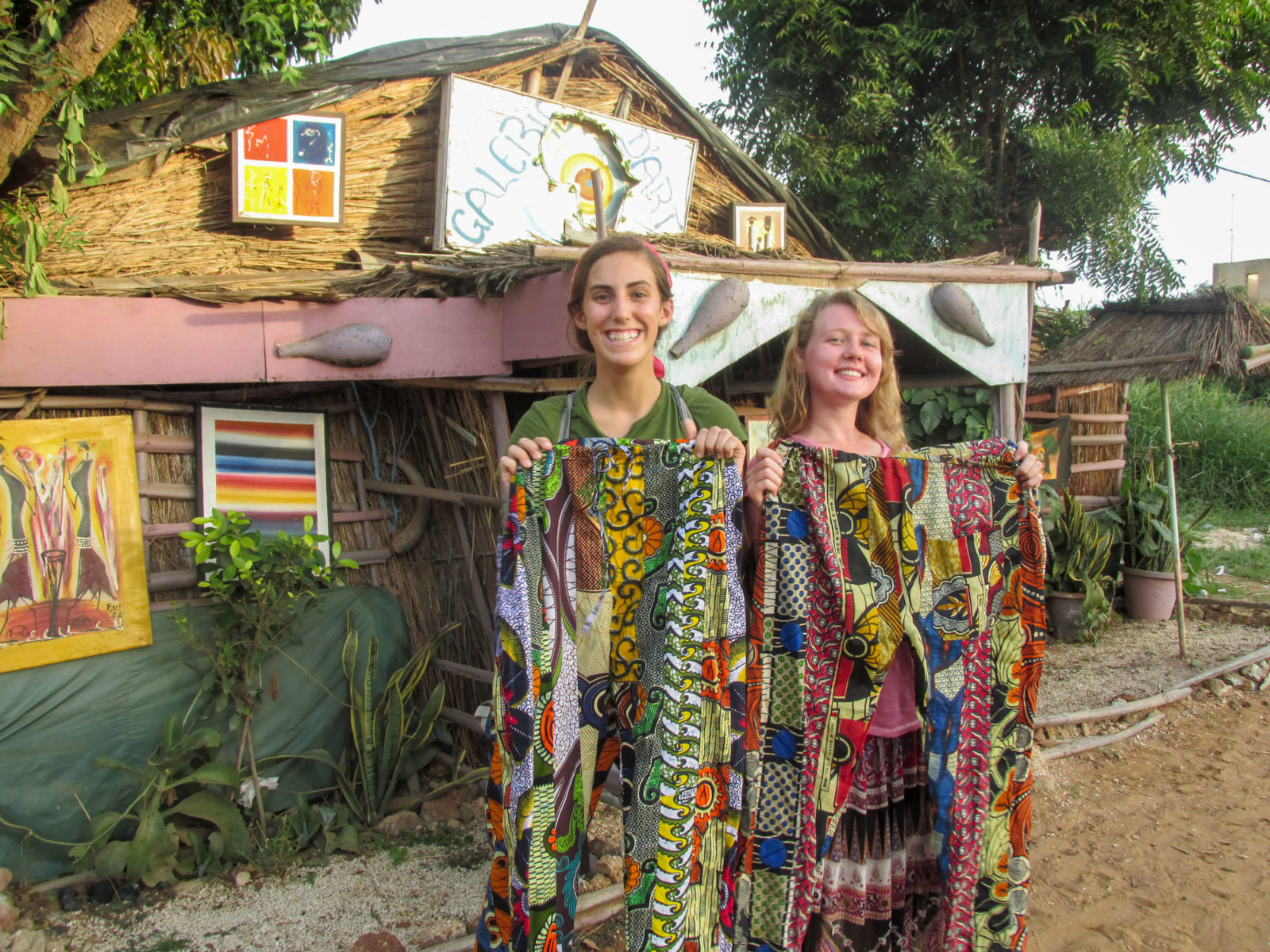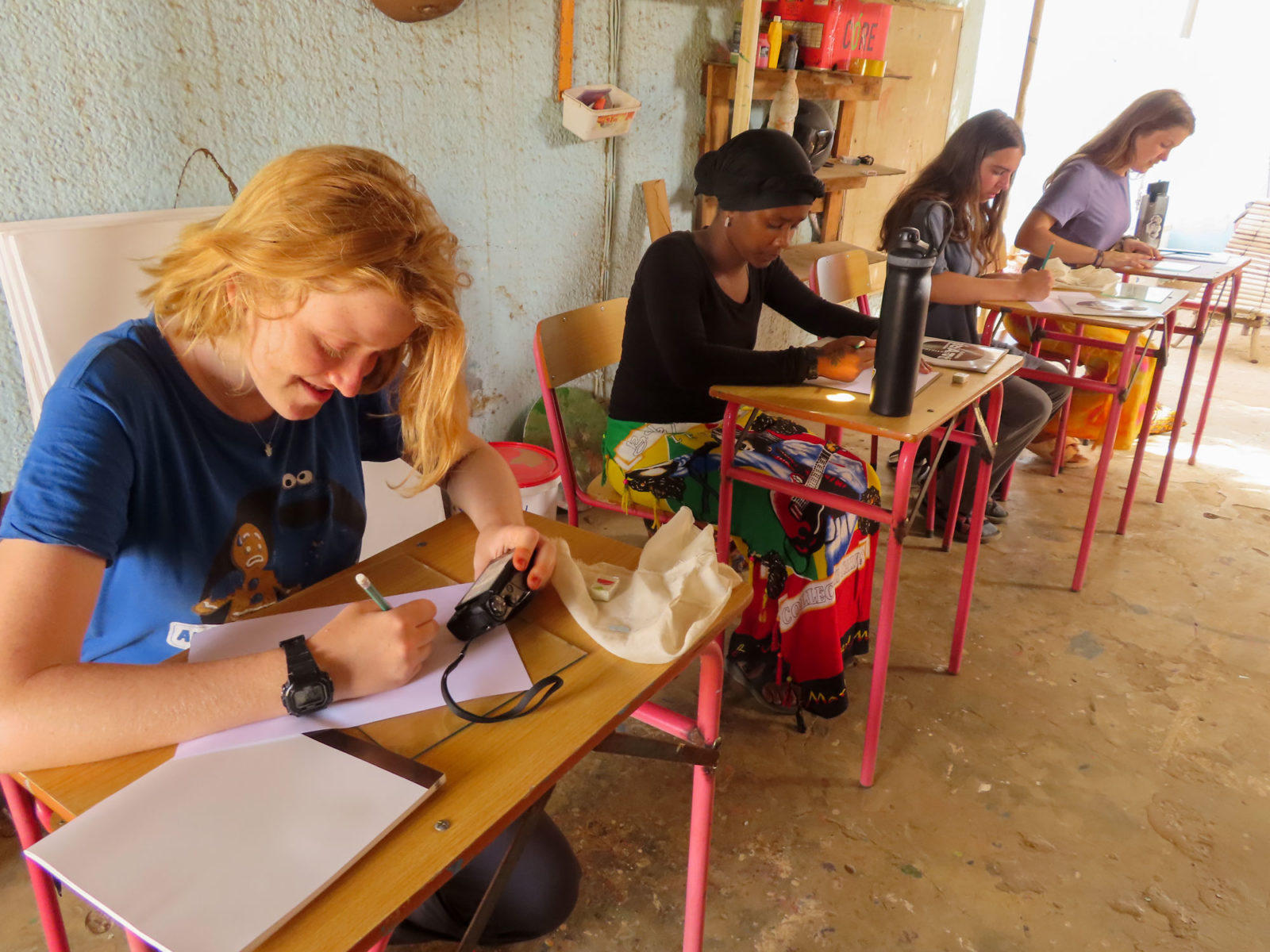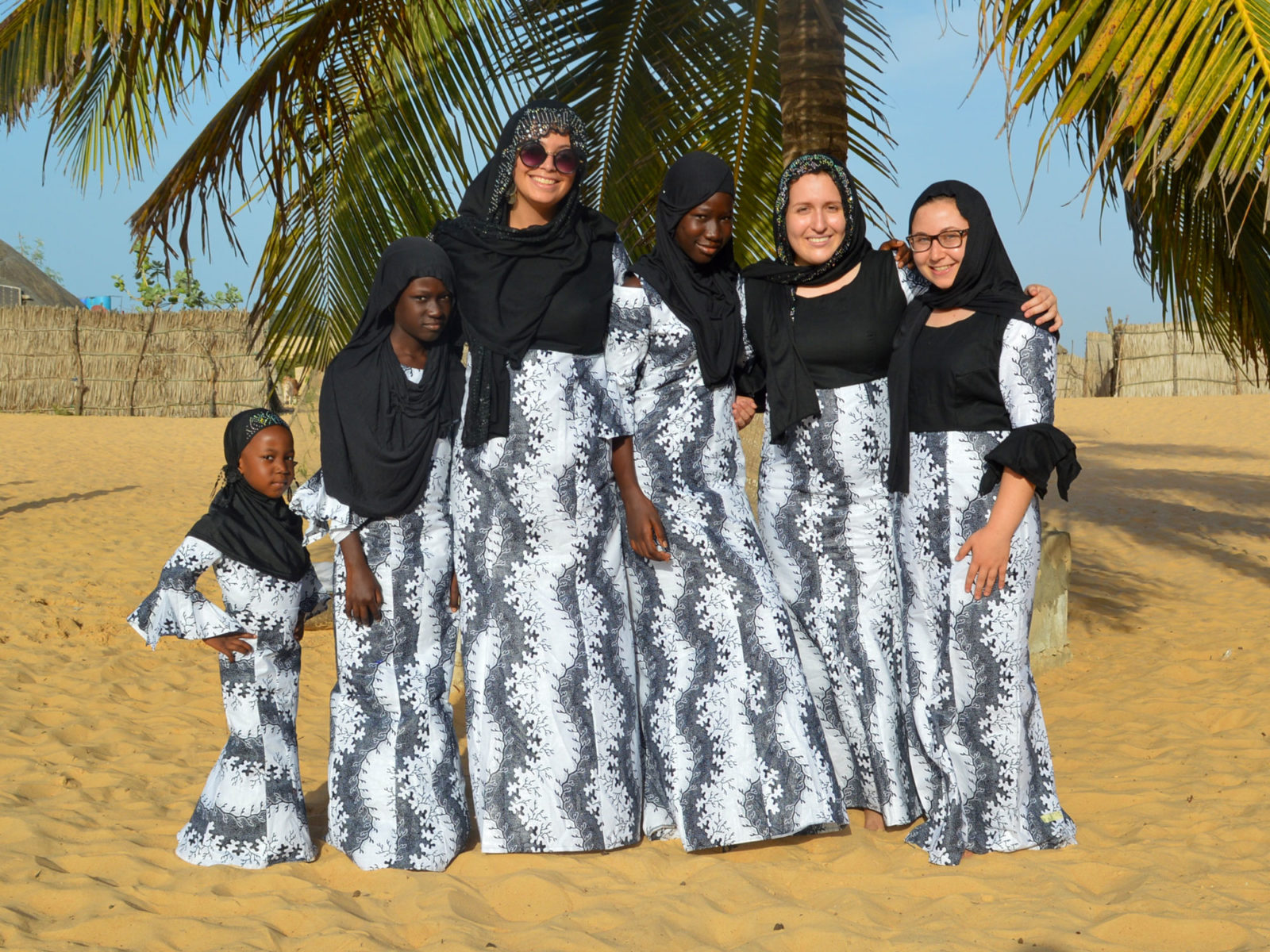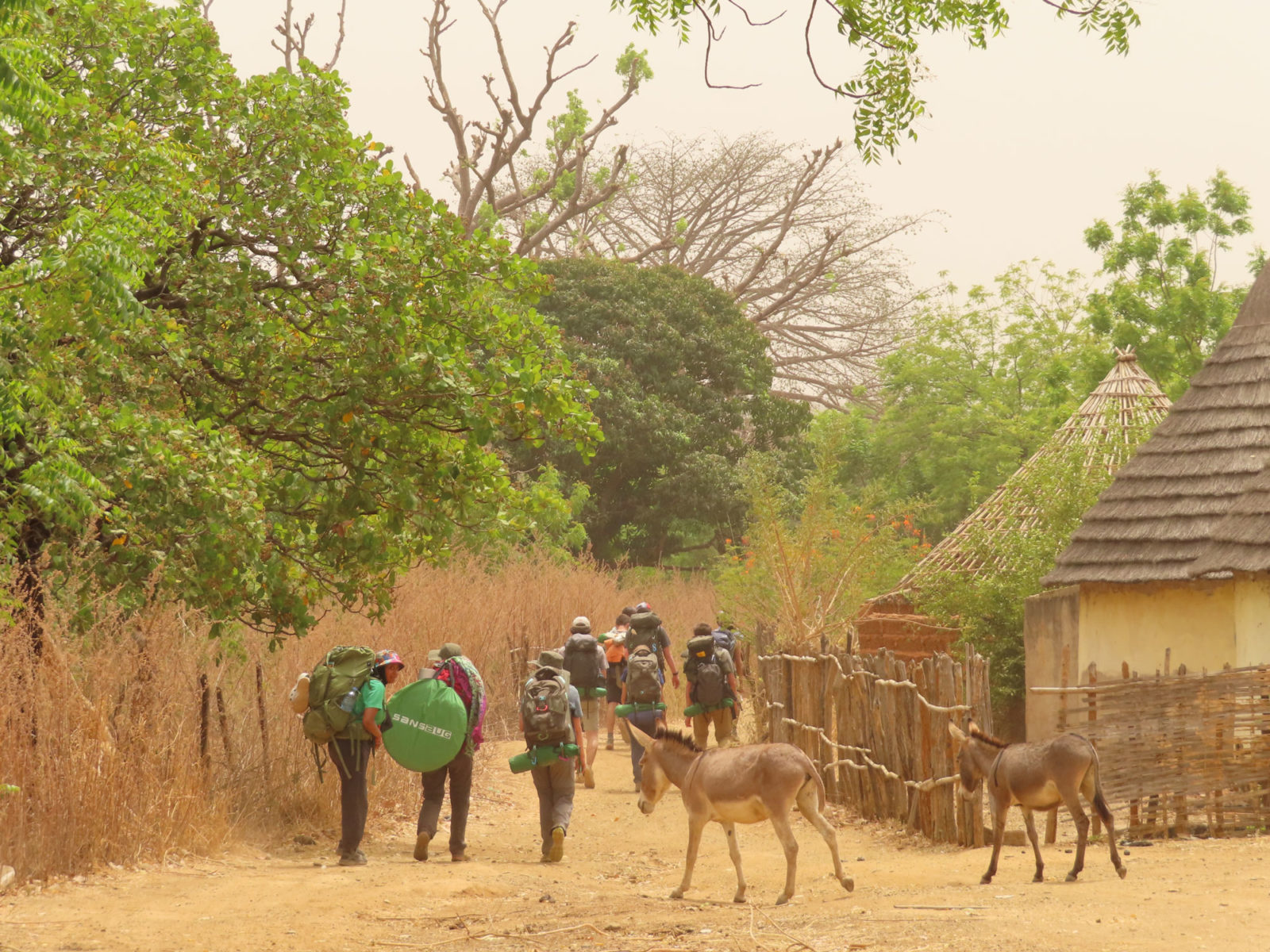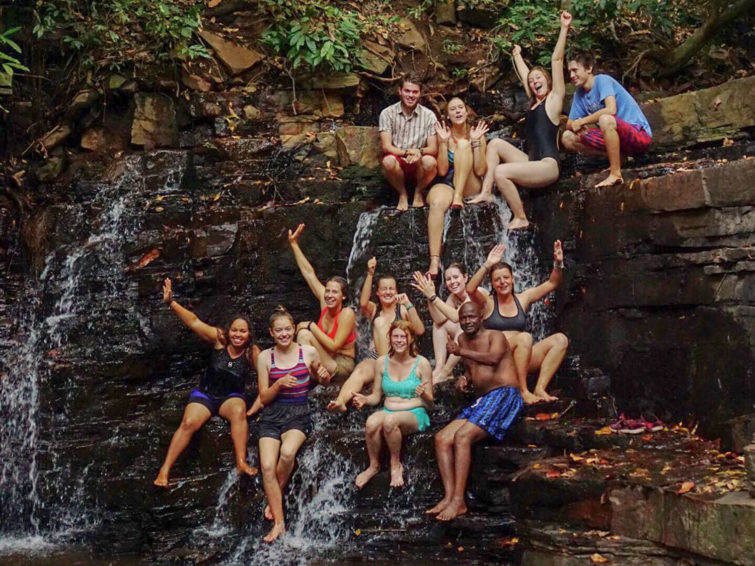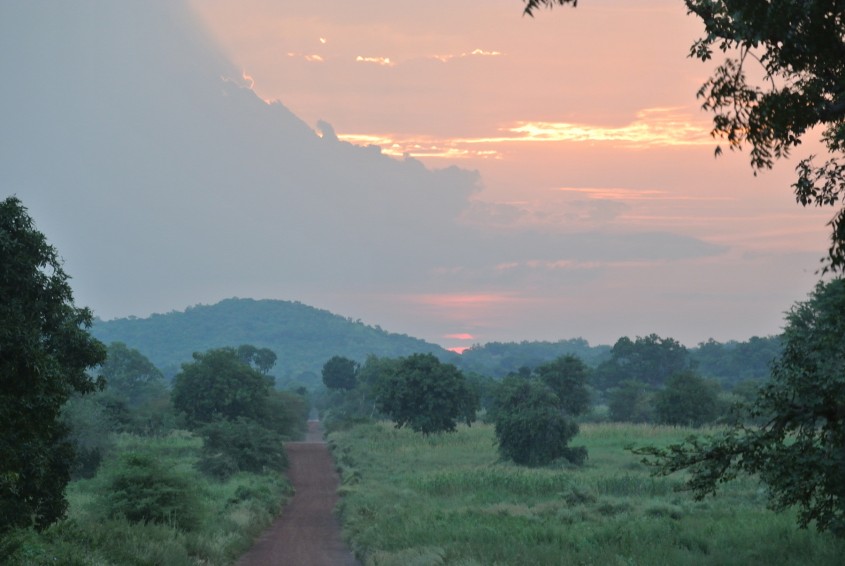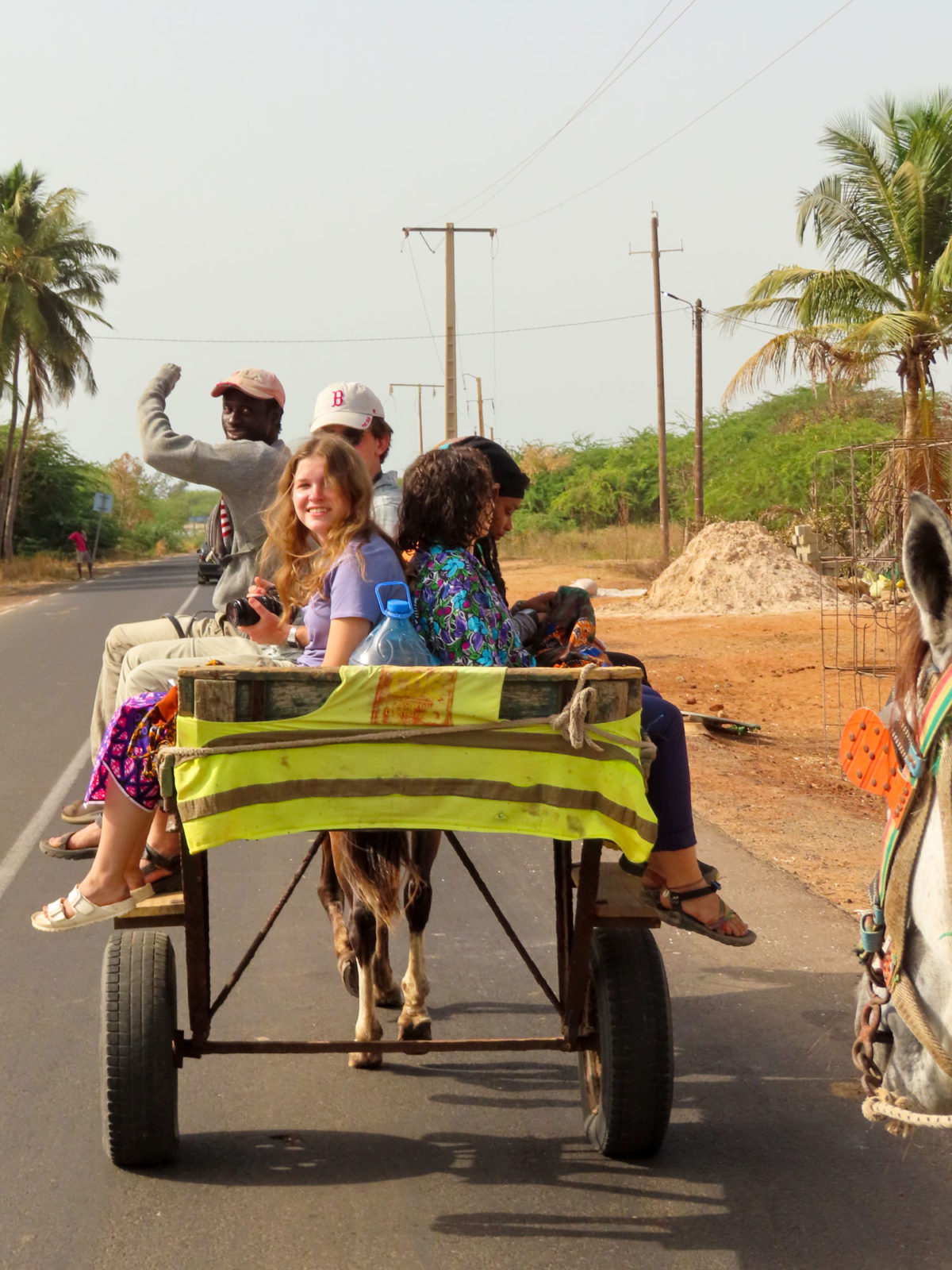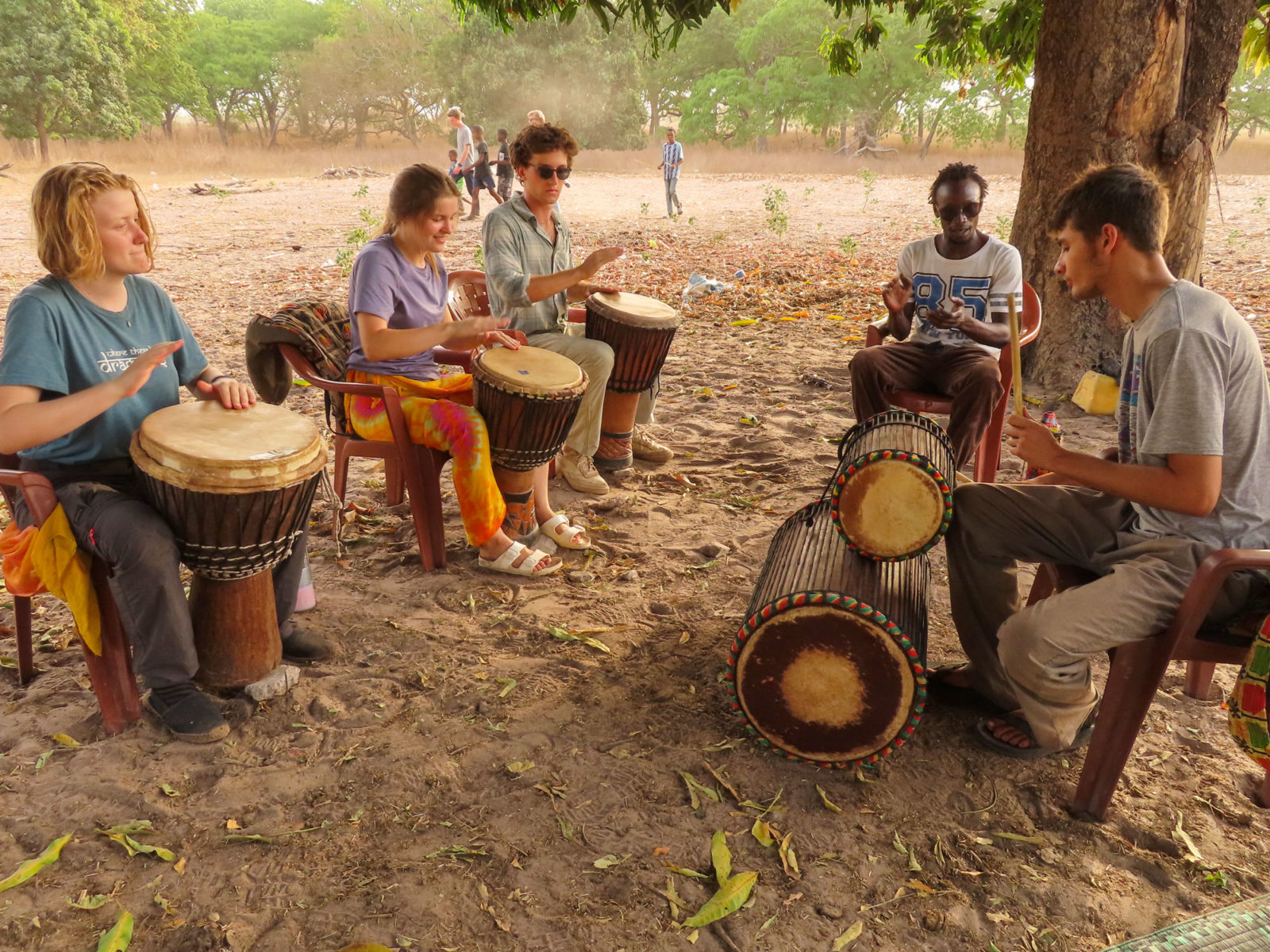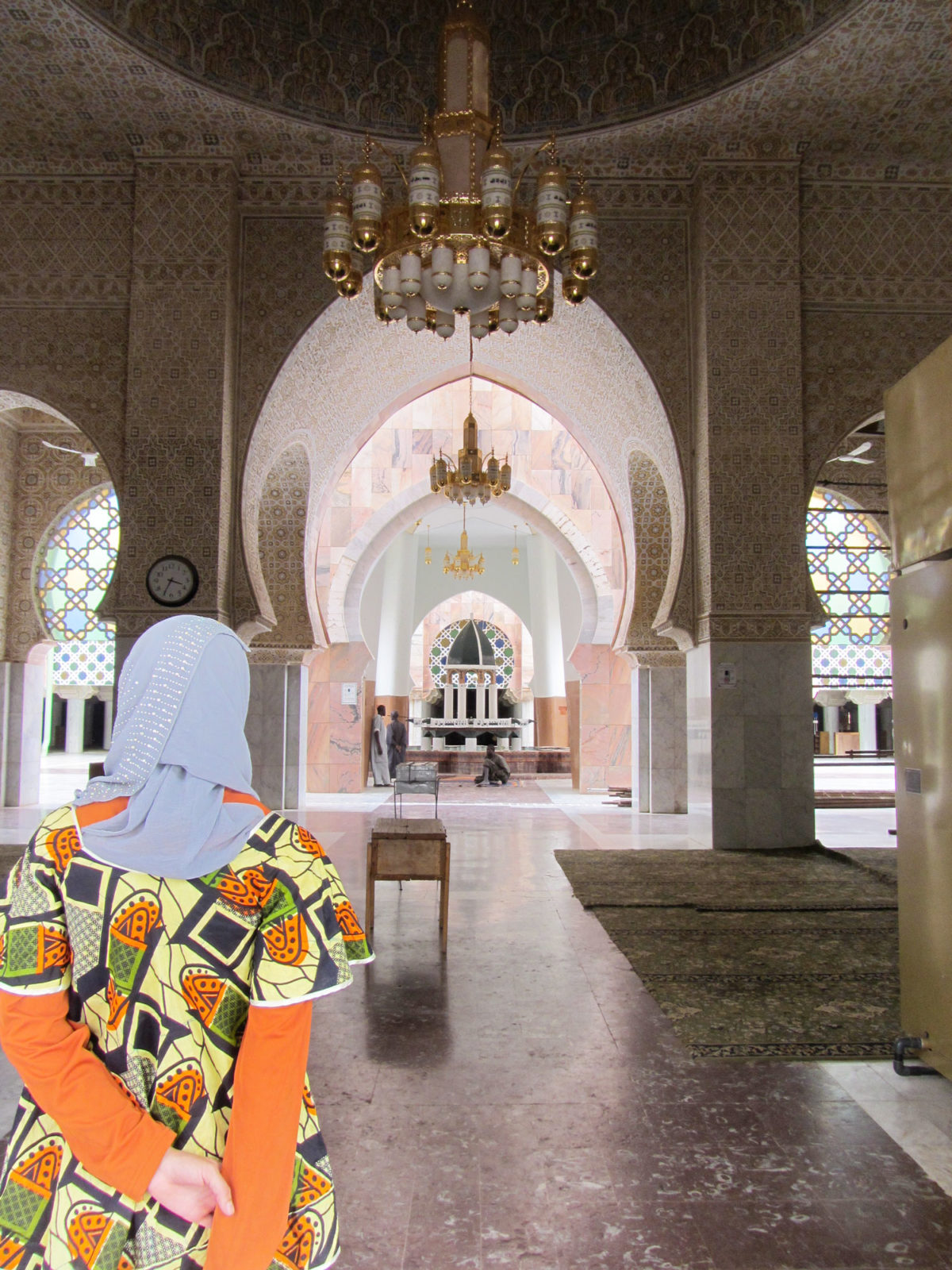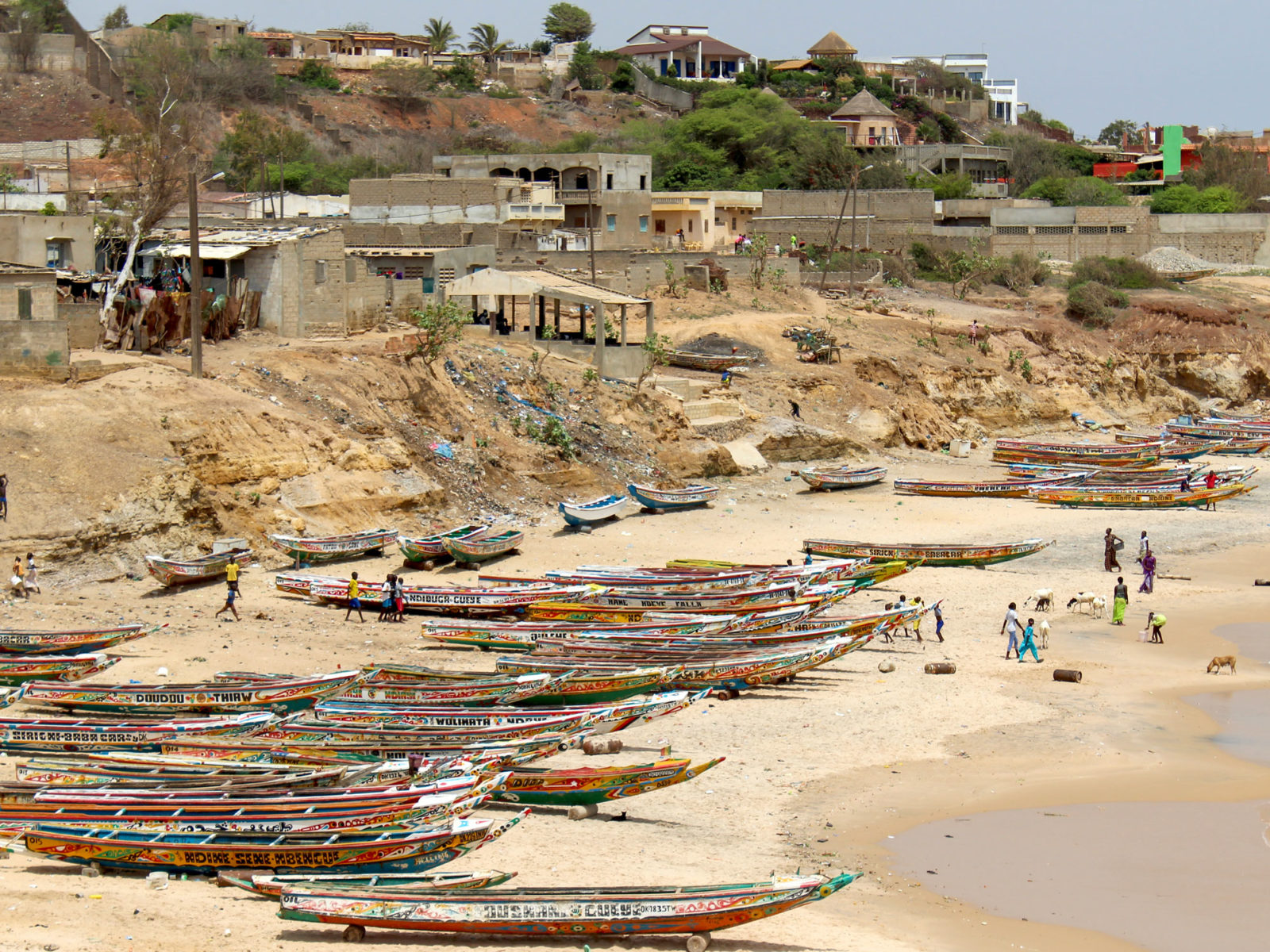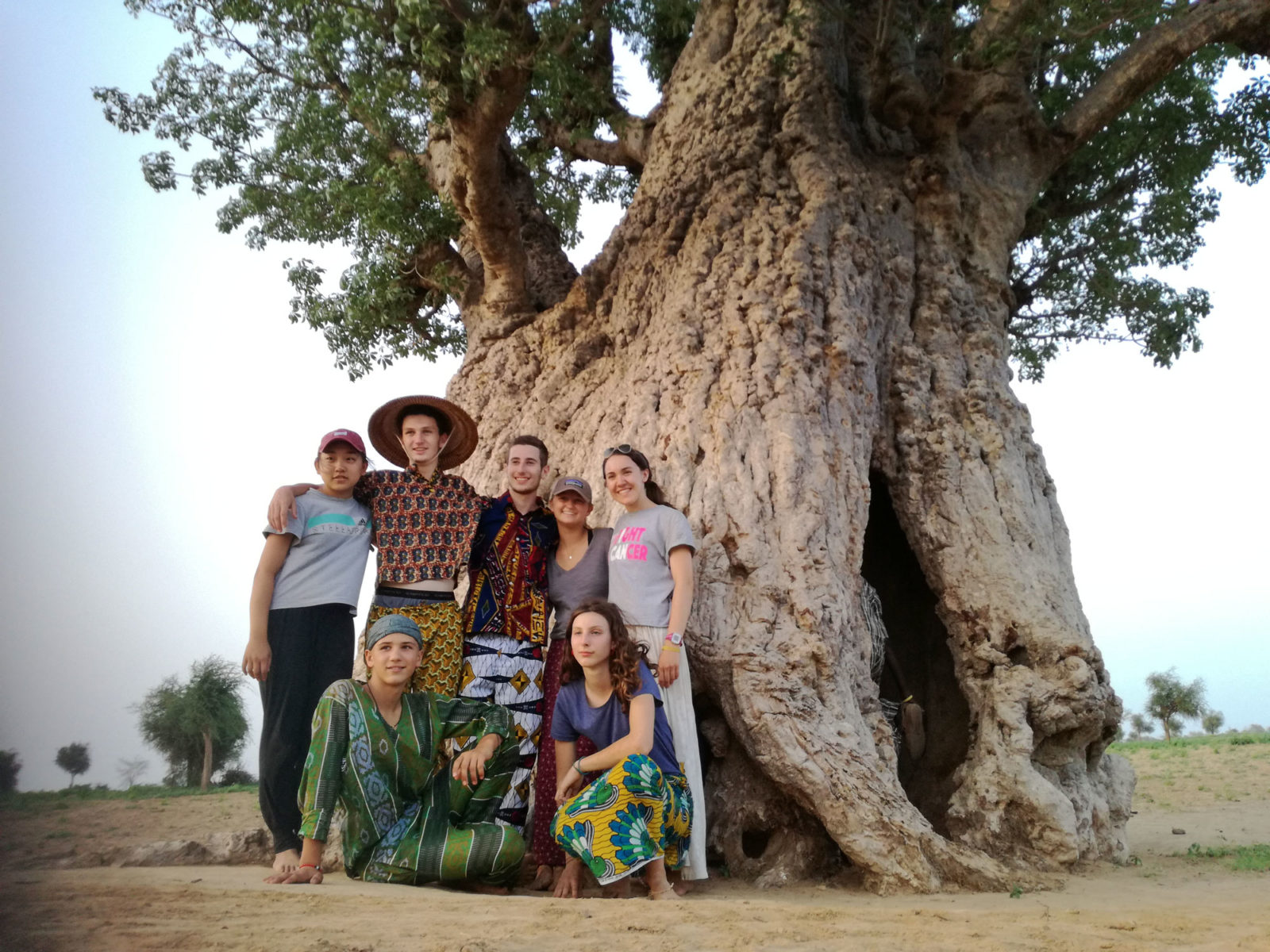West Africa Semester, Sample Itinerary
-
Week 1
After a long international flight, students arrive in Dakar and meet instructors. We then travel about an hour to Thies for our introduction to Senegal. We take this first day to rest, get our bearings, learn foundational cultural points, and key health and safety tips. Don’t worry, we’ll be back! This is just a sneak peek at the city that we’ll return to for our urban homestays. -
We continue our journey north to Mouit, a small village at the entrance to the Langue de Barbarie National Park outside of Saint Louis. This is be our home base for our semester orientation. We get to know one another, craft a shared mission, learn about Senegalese culture and history, and start basic language classes. We also have the opportunity to visit the market and speak to members of the local community about their work in the national park. With Saint Louis only a short drive away, we explore this historical city. This small island served as the capital of French West Africa for more than 200 years during the days of colonization.
-
Week 2-5
We now travel back to Thies, Senegal’s third largest town and the location of our approximately month-long urban homestay. Thies plays many roles as a regional capital and regional seat to many organizations and associations – public, private, and nonprofit. The market is friendly and hospitable, a perfect place to explore and practice bargaining. -
After we host a reception, we move in with our new African families and really begin to connect with Senegalese culture! When not with our families, we come together each day as a group to take language classes at our program house, meet with community members, and hear from guest speakers on a variety of topics such as history, politics, gender roles, or education. Thies also provides the optimum place for students to begin exploring their Independent Study Projects (ISPs).
-
Given its central location, Thies is also a great jumping-off point for small excursions to visit Dene, a small village on the coast and home to a daara or quranic school. We spend our time along the sandy shores of Dene diving into our examination of comparative religion and learning about the ways of our Sufi friends. We drum, dance, and sing with them under the starry skies.
-
Week 6
After our stay in Thies, we bid adieu to our families and travel south to Kedougou. We cross Senegal laterally, crossing the low flat interior from Thies all the way southwest to the foot of the Fouta Djallon region’s gentle foothills in Kedougou. Along the Guinean and Malian border, Kedougou can seem worlds away from Thies. It is lush and mountainous, compared to the grassy plains around Thies. We rest in Kedougou for a few days before heading out on our multi-day trek. -
Week 7
Trekking on foot from Kedougou through Senegal’s gorgeous and lush southeast portion of the country, we carry our packs as we hike from village to village and come to appreciate the diversity of the Bassari, Bedick, and Pulaar villages we pass through. We visit hidden waterfalls and learn about Animism in remote hilltop communities. We may also visit the Jane Goodall Institute in Dindefelo to learn more about the conflicts between changing agricultural practices and chimpanzee conservation projects. We have an opportunity to stay in local campements in remote villages, supporting local tourism efforts. On trail, we prepare our own sandwiches with the local tapalapa bread and also sample the local cuisine. -
Week 8
We now set our sights on travel and experiences in Guinea. While we hope to visit Guinea during this time, we ask that you remember that our itineraries are flexible. If we cannot travel to Guinea, we will do more extended trekking in Kedougou. After exploring the mountains of the Fouta Djallon in Senegal, we now explore the heart of this region in Guinea. Maliville is our home base as we continue ISP exploration, go on day hikes in the local hills, learn about Pulaar oral traditions rooted in the mountains, and continue learning the Pulaar language. We engage in another short trek in Douki which is home to the “Grand Canyon of West Africa.” With its striking landscapes and lush forests, it is often billed as the most scenic area of the Fouta Djallon. It offers some of the best hiking in the country, and maybe the region. -
We conclude our time in Guinea with a short rural stay in Timbi Madina. After having experienced the landscape throughout our trek, we meet with local community members and learn from their experiences negotiating the challenges of climate change and maintaining rural lifestyles in a globalized world. We have learned Pulaar throughout our time in the Fouta Djallon and we continue to practice language as we explore the market or join in a local soccer game.
-
Weeks 9-10
Bidding farewell to the beautiful Fouta Djallon region, we travel to the Kolda region, where we begin our rural homestay experience in a community of rice, peanut, and dairy farmers. In this village, home to subsistence farmers, we experience first-hand an important way of life in Senegal where the routine is marked by rooster crows, children’s laughter on the way to school, and family time around the fire at night. -
Our two-week rural homestay is long enough for us to settle into a routine, become comfortable with our homestay families, and develop friendships across language and cultural differences. We also have the time to continue to explore ISPs and delve into themes of development, economy, agriculture and climate change, drumming and dance, and migration and cross-border issues between Guinea-Bissau and Senegal.
-
Week 11
After we wrap up our time in our rural homestay, your student group works with instructors take on greater leadership roles and to help define ongoing travel during the Expedition Phase of the course. This might include visiting a nearly uninhabited island in Senegal’s tranquil Sine-Saloum Delta region, choosing to spend more time in Dakar, exploring the delta regions of The Gambia and Senegal, or other options according to students' interests. -
Week 12
Perched on the side of a cliff in an idyllic fishing village on the coast south of Dakar, we spend our last several days presenting our independent study projects, completing final evaluations, and preparing to return home. We leave the beach and head to Dakar, spending our last day or so getting any last-minute gifts for family and friends back home and celebrating before heading to the airport late in the evening for our onward travels. -
*Note
This semester course itinerary may include travel outside of Senegal to locations in nearby countries such as The Gambia and/or Guinea, depending on the term and learning objectives. Each course is different and some semesters spend time only in Senegal while others have chance to travel to nearby locations. Accepted students should keep an eye out for the Tentative Itinerary which will be posted on the Yak Board prior to the start of the term. This specific itinerary would detail any planned travel outside of Senegal for a particular term.

